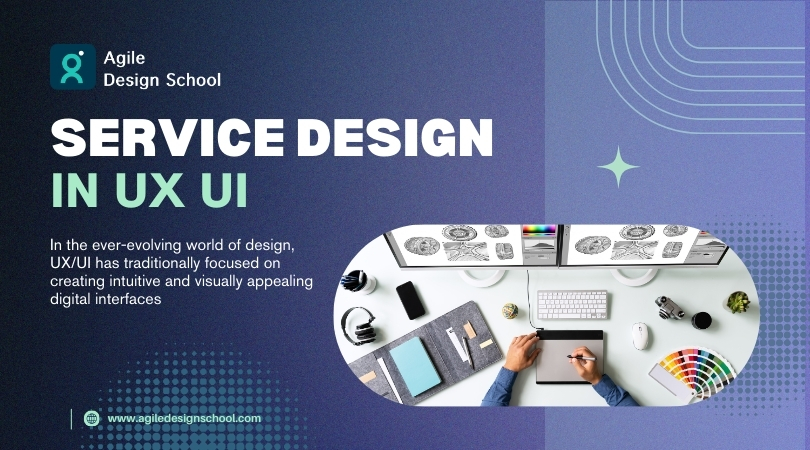
In the ever-evolving world of design, UX/UI has traditionally focused on creating intuitive and visually appealing digital interfaces. But what happens when the user journey extends beyond the screen—into physical spaces, customer support, or operational processes? That’s where Service Design comes in, a holistic approach that ties every touchpoint into a cohesive, delightful experience. At Agile Design School, we’re excited to bring this transformative discipline to our students through our Service Design Course, priced at ₹40,000 with a 3-month duration. Let’s explore how Service Design enhances UX/UI and why it’s a must-learn skill for today’s designers.
Service Design is the art and science of designing end-to-end experiences that connect digital interfaces with real-world interactions. It’s about understanding the bigger picture—how a user moves from discovering a product online, to purchasing it in-store, to seeking support afterward. Unlike traditional UX/UI, which focuses on pixels and prototypes, Service Design zooms out to optimize the entire ecosystem—people, processes, and technology.
Think of a food delivery app: UX/UI ensures the app is easy to navigate, but Service Design ensures the delivery process, packaging, and customer support align seamlessly with that digital experience. It’s about creating harmony across all touchpoints.
Imagine you’re designing an e-commerce platform. UX/UI might perfect the checkout flow, but Service Design ensures the packaging, shipping updates, and return process feel just as intuitive. By integrating Service Design, UX/UI designers can:
The result? A product that doesn’t just look good but feels good at every stage.
At Agile Design School, we believe the future of UX/UI lies in thinking beyond interfaces. That’s why we’ve introduced our Service Design Course—a 3-month program for ₹40,000—designed to equip you with the skills to craft seamless, impactful experiences.
What You’ll Gain:
With expert instructors, hands-on projects, and an Agile-inspired approach, you’ll graduate ready to tackle complex design challenges and stand out in the industry.
For just ₹40,000 and 3 months, Agile Design School’s Service Design Course offers an affordable, impactful way to elevate your UX/UI expertise.
Service Design takes UX/UI to the next level, creating experiences that resonate across every interaction. It’s not just about designing screens—it’s about designing systems that delight users and drive success. At Agile Design School, we’re proud to lead the way with our Service Design Course, empowering designers to think bigger and bolder.
Ready to master Service Design? Join us for ₹40,000 and transform your career in just 3 months. Visit our website to enroll today!
Agile Design School: Where design meets impact.
Copyright © 2025 Agile Design School | All rights reserved.
Copyright © 2025 Agile Design School | All rights reserved.